Bringing the Specialist to the Bedside:
A TELEMEDICINE UPDATE
…what many patients still don’t know
By Bobbie Fisher
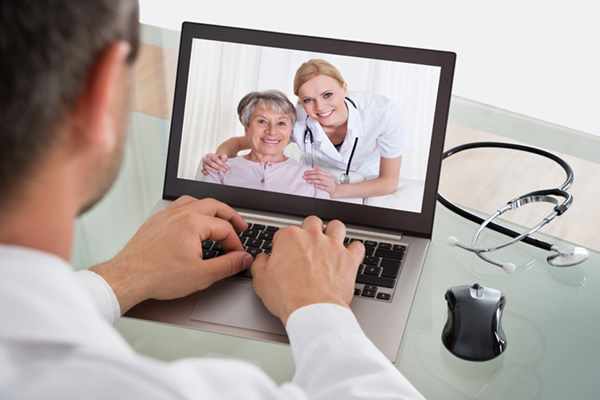
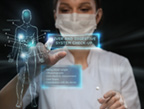 Many people consider telemedicine to be a relatively new concept, whereas it might be argued that the practice actually began the first time a physician returned a patient’s phone call and said, “Take two aspirin and call me in the morning.”
Many people consider telemedicine to be a relatively new concept, whereas it might be argued that the practice actually began the first time a physician returned a patient’s phone call and said, “Take two aspirin and call me in the morning.”
And while phone conversations with doctors – rather than in-home or in-office visits – quickly became widely accepted, many patients have persisted in viewing other telemedical advances with some skepticism. As recently as July of 2015, medical magazines were publishing articles with titles like American public still skeptical about telemedicine (July 15, 2015 | Eric Wicklund – Editor, mHealthNews), citing surveys and studies that indicated that while consumers were growing more comfortable with certain aspect of telemedicine, they were wary of seeing a doctor or getting a diagnosis online. In fact, one study of 504 American adults, conducted by internet marketing company TechnologyAdvice, indicated that some 75 percent either didn’t trust a diagnosis delivered through telemedicine, or would give it less weight than one made by a doctor in person.
It’s very likely that skepticism stems from a lack of understanding of the breadth of care made possible by telemedicine – or even what the term itself means.
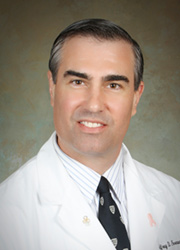
Telemedicine Defined.
“Most people accept the simple definition of telemedicine as providing health care over a distance,” says Jeffrey Forman, MD, a pulmonology and critical care medicine physician with Bayview Physicians Group, who recently completed a Masters of Health Care Delivery Sciences program at Dartmouth College, where he did a focused, longitudinal project on mobile health technology. “It’s important to make a clear distinction between telemedicine, mobile health and remote patient monitoring,” he says. “There’s a difference that patients should understand.”
Telemedicine communication can be from physician to physician, from patient to physician, or from a remote physician to an onsite doctor and patient, often involving a live video connection like Facetime or Skype.
“Mobile health technology,” Dr. Forman continues, “involves employing a mobile device like an iPhone or iPad, to provide pertinent medical information to a provider. Think of a patient sending information about his blood sugar to his physician, who can then treat it appropriately.”
Remote sensing refers to setting up actual monitoring devices in patients’ homes. These will monitor heart rates, blood pressures, O2 saturations, and other data, which is then sent to the provider.
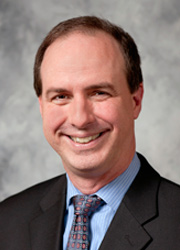
Leveling the playing Field for Every Patient in an Acute Care Setting.
Hampton Roads is the home of large, state-of-the-art hospitals and hospital systems. Acutely ill patients in this metropolitan area of Southeastern Virginia have almost immediate access to specialized medical services in nearly every field of medicine. Many areas of the Commonwealth are not so fortunate, reflecting the majority of the country: “In fact, more than half of the hospitals in the U.S. have fewer than 100 beds,” says John R. Baker, MD, a neurointerventional surgeon and Director of the Bon Secours Neurovascular Center. “In acute care, it’s always a matter of how quickly a specialist can get to the patient. Telemedicine allows us to bring specialized medical care to patients in these smaller hospitals.”
For example, a critical access hospital in a small, rural area may not have the resources to employ a full-time intensivist and other specialists to deal with acute stroke patients. A patient presenting with weakness on one side, or in the leg, might otherwise have to wait to be transported to a larger facility sometimes hundreds of miles away for diagnosis and treatment, but using a teleneurology service, the emergency room physician can immediately consult with a neurologist who can evaluate the patient, observing and asking questions, live and in real time. The neurologist can then order additional tests, begin appropriate treatment and arrange for transfer if needed. “These experts have broadened their inclusion category,” Dr. Baker says. “They also identify those patients who may need to go on to very specialized surgeries, those who need not only medication for their strokes, but who also need emergency surgery to remove a blood clot or repair an aneurysm.”
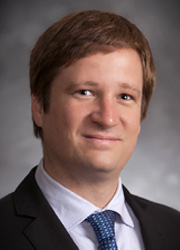
Neurointerventionalist Wolfgang Leesch, MD and his colleagues with Riverside Neurovascular Specialists can log onto a link to the outlying hospitals in the Riverside Health System – in Gloucester and Tappahannock and on the Eastern Shore – to evaluate suspected stroke patients. “Because there’s no test that provides hard evidence that someone has had a stroke,” Dr. Leesch explains, “there are two components to telestroke: telemedicine and teleradiology. We need to look at radiological images to determine if there is bleeding in the brain. CT scans are online and can be examined by a radiologist. Then we can determine if the patient needs the clot busting TPA drug. But it takes the trained eye of a neurointerventionalist to make that determination, and to direct the subsequent care of these critically ill patients.”
Essentially, Dr. Leesch says, “teleneurology has the potential to place a stroke neurologist, an interventionalist, and a neurosurgeon at every rural hospital” – not just in Virginia, but all over the world.
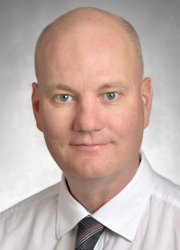
Telemedicine in the ICU.
In 2000, Sentara started the eICU, which uses remote telemonitoring of ICU beds, the first hospital system in the country to do so. “In our eICU, localized specialists monitor patients 24 hours a day, seven days a week,” says Michael G. Charles, MD, Medical Director for Clinical Effectiveness with Sentara Medical Group. “We have more than 100 beds now, and recently expanded to Sentara Obici Hospital.”
The physician in charge sits across from computer monitors that receive information from the ICU – EKG data, oxygen levels, lab data, reports from nurses and even some video feeds. The physician reviews the data and instructs nurses on when to adjust medications, ventilator settings, etc., just as the physician would do in person. However, instead of doing so in person in one hospital, these telemedicine practitioners are monitoring ICU patients in hospitals across the Sentara system.
“When you’re in an ICU, you’re constantly looking at monitors and receiving information,” Dr. Charles says. “It’s very amenable to telemedicine.” But, he emphasizes, “There is still a physician present to respond to emergency situations. It won’t eliminate the need for an in-person doctor in the hospital.”
Telemedicine in Chronic Care Settings.
“Clinics have begun using these services for patients with Parkinson’s or other movement disorders as well,” Dr. Baker says. Teleneurologists can watch patients on the video, review their tremors, and compare with all previous videos. These specialists can make adjustments to medications and order any other modalities they believe necessary. “By interacting with teleneurologists,” Dr. Baker explains, “these patients can be evaluated for mental status, even Alzheimer’s, without having to travel outside their home area. They can go to their doctor’s office or a hospital or remote clinic.”
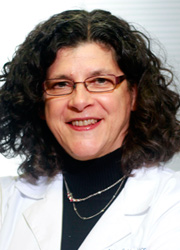
Teledermatology – a Growing Subspecialty.
“In dermatology,” says Abby S. Van Voorhees, MD, Chair of the Department of Dermatology and Residency Director at Eastern Virginia Medical School, “there are two kind of telemedicine that are being developed in parallel.” One, she explains, is what many patients do spontaneously: store and forward. They take cell phone pictures of a rash or a growth, and then show them to someone. “We don’t encourage people to send photos phone-to-phone, because it’s not HIPAA compliant,” she notes, “but the social media-savvy public has adopted this approach.”
But a primary care physician might well take a photo of a patient’s rash or growth and send it to a dermatologist, who can then give advice or be reassuring. “We can say something looks worrisome and needs further testing or assessment,” Dr. Van Voorhees says, “or that it doesn’t appear to be of great concern.”
The other kind of teledermatology is less common. “It’s real time telemedicine,” Dr. Van Voorhees explains, “where the primary care physician links the patient by video directly to the dermatologist, who views the presentation at that exact moment and can confer with the patient. The dermatologist can then direct treatment, or give advice to the primary in real time.”
The EVMS teledermatology department has been very involved in telemedicine at the Veterans Affairs Hospital. “We provide service for a large catchment area of veterans’ hospitals for the entire region,” Dr. Van Voorhees says. “It eliminates the need for veterans to have to travel all the way to Hampton to be seen. Arrangements can be made for biopsies to be done in their local hospitals, and guidance can be provided to their treating physician to ensure they receive the proper additional care.”
It’s also been an effective learning and teaching tool at EVMS, an added advantage for medical students and trainees.
Expanding telemedicine to other specialties.
There has been increasing interest in the Commonwealth in providing mental health services to remote areas. “There is a shortage of psychiatrists in many of these rural areas,” Dr. Charles notes. “We’re looking at telemedicine to help with consults. For instance, if a patient comes in to an emergency room in one of Virginia’s most rural areas, a teleconsult can be arranged with a psychiatrist, who could monitor one or more different emergency departments for behavior health emergencies. Fortunately, those don’t occur too frequently, but when they do, this would allow one psychiatrist essentially to take care of many patients in outlying hospitals.” The idea is in its infancy, Dr. Charles says, but it’s being carefully studied.
Electronic House Calls, Patient Portals, Mobile Medicine
– What Patients Really Think.
“One of the models of teleconsultation is a large group of specialists who do consults anywhere in the country,” Dr. Baker says. “The next person in the queue takes the next call. You might get a quicker response, but that person doesn’t necessarily know your patients or your particular system. You can also have a smaller, localized group of six or seven experts, rather than 300, and you can develop a rapport with them.”
As for the patients themselves, they’re seeing the specialist on a video, so it’s not a detached voice coming out of a speaker. “It’s done very professionally, and most patients realize they’re getting more comprehensive care.”
“For many dermatology patients, telemedicine is a big plus,” Dr. Van Voorhees says. “It spares them having to make an extra visit to the doctor’s office.”
Dr. Charles agrees: “Patients want care that’s convenient and fast. They’re already tuned into the technology. The new generation that’s coming up isn’t going to sit around for two hours in a waiting room.”
The Bottom Line.
Telemedicine is here to stay. The opportunities to expand its reach into the everyday practice of medicine are incalculable. But it’s not – nor can it be – a replacement for a caring, well trained physician. And it’s not going to help every patient. As Dr. Forman explains, the key to many of these remote technologies being successful is the analytics behind them. “You need a system that analyzes the data and can filter it so that triggers are made when things go wrong,” he says. “As we get more and more data, these analytics will help us filter out and determine which patients are on the cusp of having a problem for which we can intervene, before it results in a visit to the emergency room or a hospitalization. The key is setting up a command and control center, with trained medical personnel looking at the data and communicating with the attending physician to give appropriate medical advice.”
Ultimately, it isn’t technology that helps people. It is medicine that helps people.

